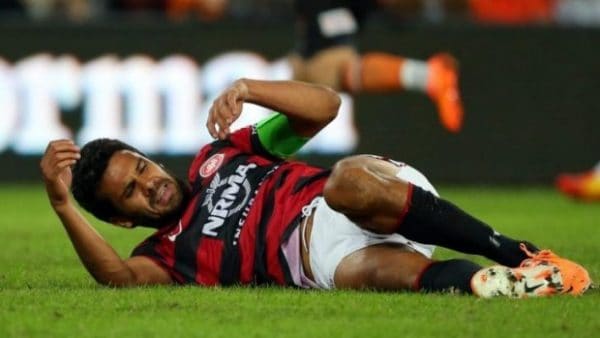
The implications of Nikolai’s medial collateral ligament injury and gives us a great over-view of the management of this common football (all codes) injury….
It was half way through the 2nd half in the A-League Grand final match between Western Sydney Wanderers and Brisbane Roar. The Wanderers up 1-0 before Nikolai Topor-Stanley was involved in a tackle that left the medical staff with a big decision – should he return to the field?
Nikolai fell awkwardly, stressing his medial collateral ligament which is located on the inner side of the knee joint. The ligament connects the thigh bone (femur) to the shank (tibia) and prevents the knee collapsing inwards towards the other.
The damage to a ligament is referred to as a sprain and the amount of damage determines the grading of a first, second or third degree sprain:
Treatment will all depend upon the grade of the injury: t
he injury will likely take place through direct contact to the outside side of the knee or via a twisting mechanism whereby the foot is planted into the floor and the pivot occurs away from the affected knee. Furthermore, it is possible to damage the ligament through a more constant minor repeated strain; this type of injury is common in swimmers who are involved in long distance breaststroke.
Along side the treatment mentioned, the physiotherapist will develop a personalised home exercise program that will aim at achieving full range of motion and strengthening surrounding muscles in a functional and sports specific manner.
Thankfully for Nikolai Topor-Stanley, he will have many weeks to rehabilitate his injury in the off season and not be pressured to return to sport too soon.